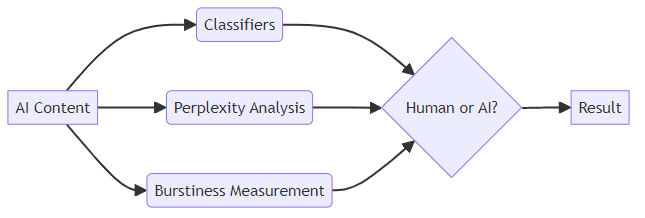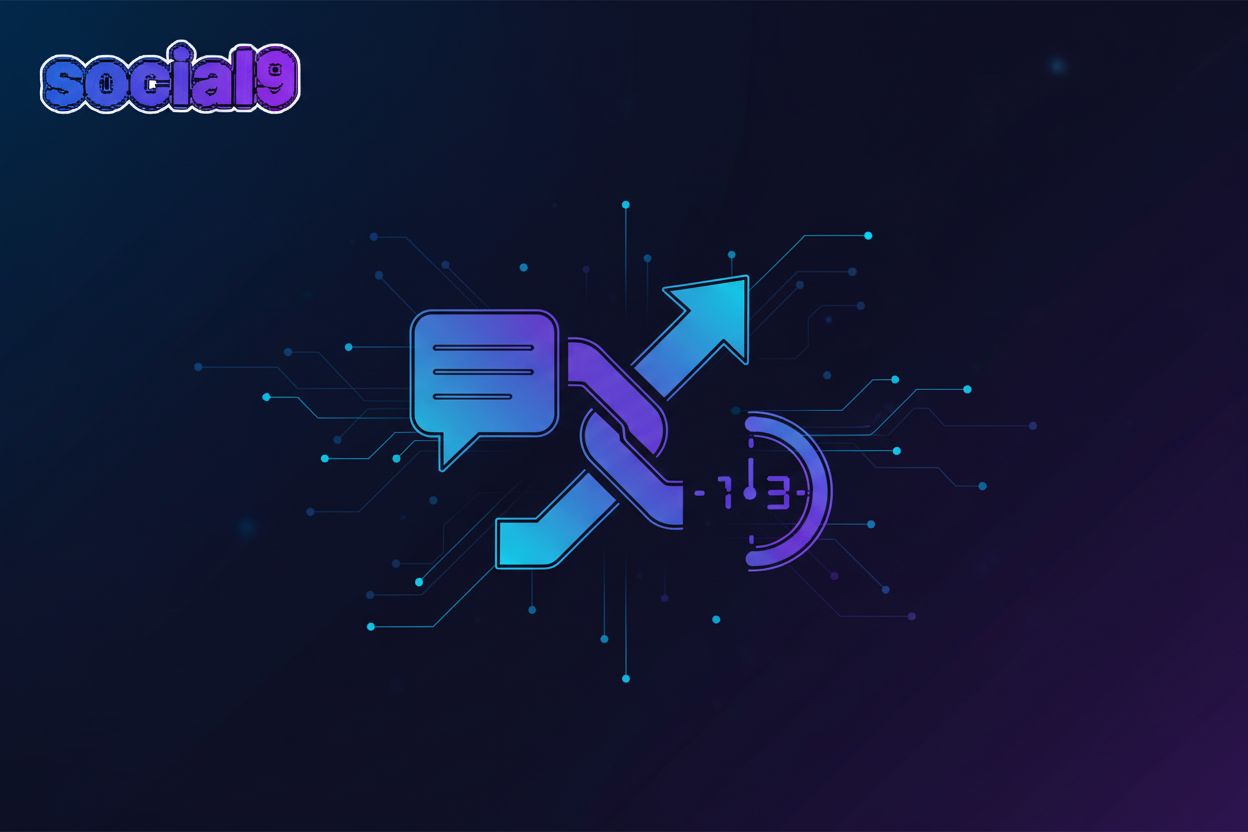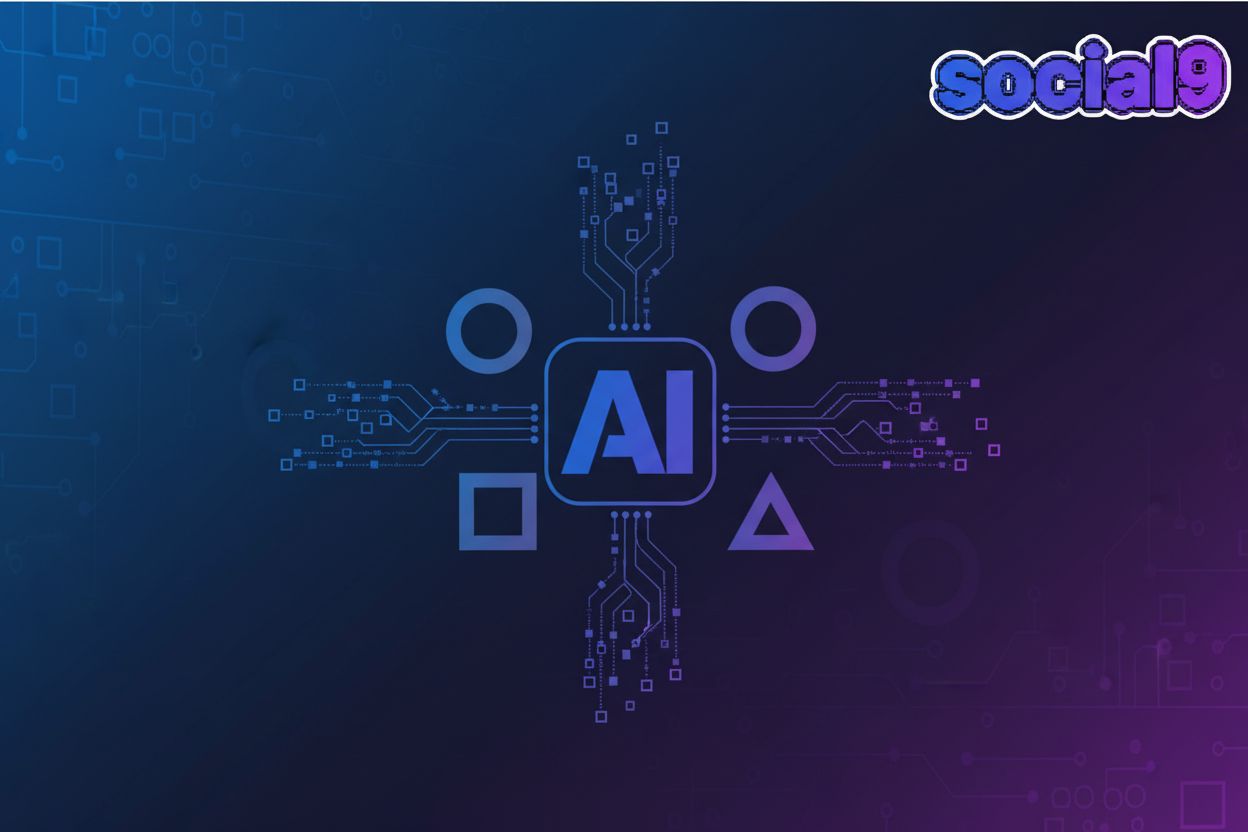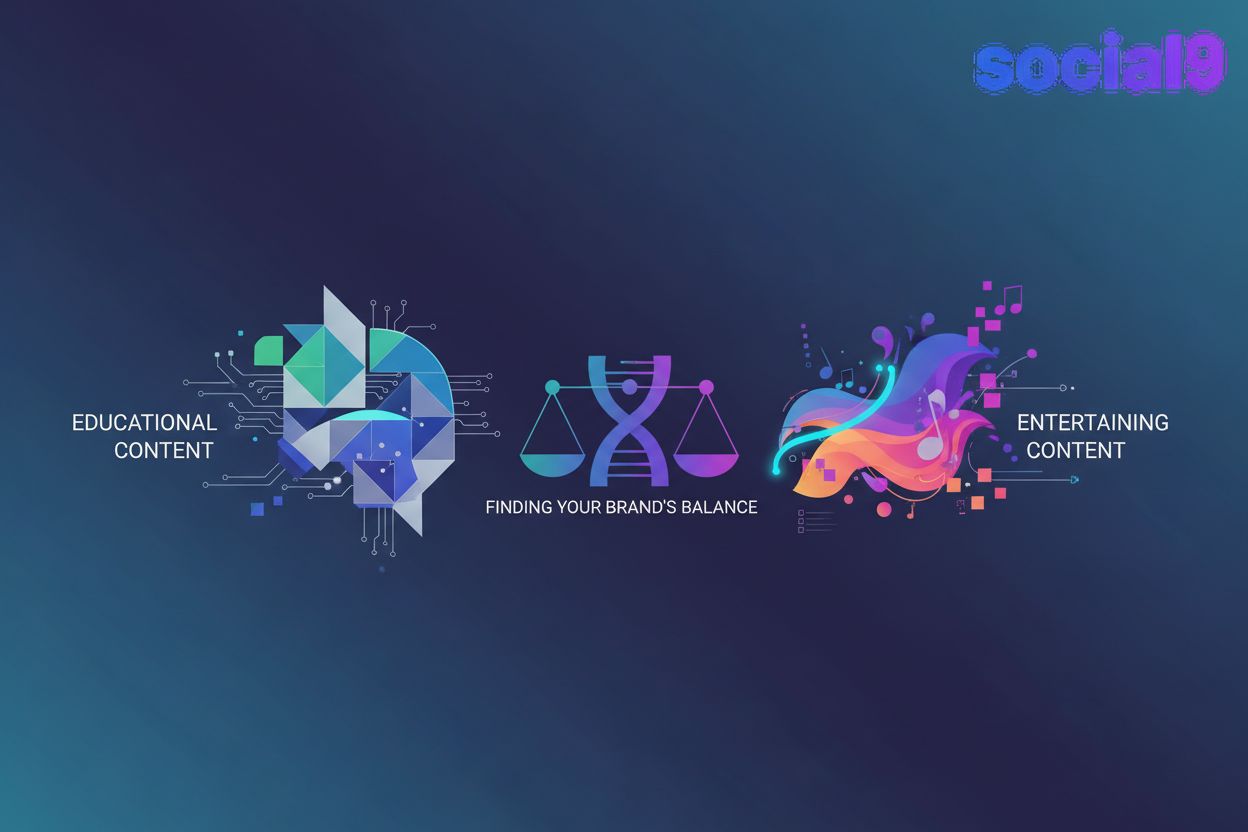Content Authenticity and AI Detection: Navigating the New Social Media Landscape
AI's rise is undeniable, but can it truly replace the human touch? While ai offers unprecedented efficiency in content creation, its impact on authenticity and trust raises important questions.
Ai tools are revolutionizing content creation by streamlining processes and saving valuable time. Now, anyone can automate content tasks, from drafting blog posts to generating social media updates.
- Ai excels at content automation. It can quickly produce drafts, saving time and resources.
- Tools like ChatGPT generate text, while others create images and videos, boosting productivity across industries.
However, ai-generated content often lacks the personal connection that resonates with audiences. Over-reliance on ai can erode brand trust.
- Ai-generated content can lack the emotional nuance and personal experiences that make content relatable.
- As Stan Ventures notes, consumers are increasingly able to detect ai-generated content, which can negatively impact brand perception.
A study by Hookline& found that 82.1% of people said they can tell when content is AI-generated
As we move forward, balancing ai's efficiency with human authenticity will be key. Next, we'll explore the methods used to detect ai-generated content and their reliability.
Understanding AI Content Detection: How It Works
Is it possible to tell if social media content is authentic or ai-generated? As ai tools become more sophisticated, it's crucial to understand how ai content detection works.
Ai content detectors use various methods to identify ai-generated text and images. These methods analyze content for patterns and characteristics that distinguish ai from human creation.
- Classifiers: These machine learning models categorize content as either human- or ai-generated. Paperpal explains that classifiers learn from labeled training data. Classifiers assign a confidence score indicating the likelihood of the text being ai-generated.
- Perplexity: Think of perplexity like how surprising a sentence is. If a sentence is super predictable, like "The cat sat on the mat," it has low perplexity – ai often writes like this. Human writing is usually more varied and surprising, so it has higher perplexity. It's like a child's simple sentences versus a seasoned writer's prose.
- Burstiness: This looks at how varied sentence structures and lengths are. High burstiness means sentences jump around in length and complexity, like a real person talking. Ai often writes with more consistent, monotonous patterns, leading to lower burstiness.
To visualize these methods, consider the following diagram:

It's important to note that ai detectors are not always accurate. Several factors can affect their reliability.
- Ai detectors are not 100% accurate. They can produce false positives (flagging human-written content as ai) and false negatives (failing to detect ai-generated content).
- Writing by non-native English speakers may be unfairly flagged. Paperpal points out that content may not conform to the stylistic sentence structure of the training data.
- Techniques exist to "fool" ai detectors. Adding whitespace or misspellings can sometimes bypass detection. This works because these disruptions break the predictable patterns that detectors are looking for, but it can also make the content harder for humans to read.
Consider the challenges faced by educators in ensuring academic integrity. Ai detectors can help identify ai-generated essays, but educators must also be aware of the limitations.
A balanced approach involves using ai detection as one tool among many, alongside traditional assessment methods.
Understanding the nuances of ai content detection helps us navigate the evolving social media landscape.
Maintaining Authenticity: Strategies for Content Creators
Ai content is everywhere, but audiences are craving something more: authenticity. How can content creators stay genuine in this evolving landscape?
It's tempting to let ai take the reins completely, but that’s not the path to authentic content. Instead, view ai as a powerful assistant to augment your own creative abilities.
- Use ai as a tool, not a replacement. Ai can help with research, outlining, and drafting, but the final product should always reflect your unique perspective.
- Infuse personal experiences. Share anecdotes, stories, and emotions that connect with your audience on a deeper level. This is what sets you apart from generic ai-generated content.
For example, a financial advisor could use ai to draft a blog post about retirement planning. However, they would then add personal stories of clients they've helped, showcasing empathy and building trust.
Building trust starts with being upfront about your content creation process. Don't hide the fact that you're using ai—embrace it.
- Be transparent about ai use. Let your audience know how ai is involved in your workflow. This shows you're not trying to deceive them.
- Explain human oversight. Emphasize that ai is a tool you use to enhance your work, not replace it. Highlight the human touch that goes into refining and validating the content.
- Commit to genuine engagement. Show your audience that you value their input and are committed to building a real connection, not just churning out content.
For instance, a healthcare blogger might start a post by saying, "I used ai to help me research this topic, but all the insights and advice are based on my years of experience."
A retail brand could use ai to generate product descriptions, but then add a personal note from the founder about the inspiration behind the product. A marketing agency might use ai to create initial drafts of social media posts, but then tailor them with client-specific data and insights.
By balancing ai's efficiency with human authenticity, content creators can thrive in the new social media landscape.
The Impact on Brand Perception and Trust
Can ai-generated content damage your brand's reputation? As consumers become more savvy, the answer is increasingly yes.
Consumers are getting better at spotting ai-generated content. This can lead to negative perceptions of brands that rely too heavily on it.
- Consumers are increasingly able to detect ai-generated content, which can negatively impact brand perception, as Stan Ventures notes.
- A study by Hookline& found that 82.1% of people said they can tell when content is AI-generated.
- Paperpal notes that ai detectors are considered reliable "7 out of 10 times" on a sample size of 100 articles, suggesting they can be quite useful in ensuring content originality. However, it's important to clarify that this metric likely refers to the detector's success rate in identifying AI content, and the sample size is relatively small for broad claims about reliability.
Older audiences may be even more critical of ai-generated writing. Nearly 30% of respondents aged 45–65 said they strongly dislike ai-generated writing, according to Stan Ventures.
Beyond older demographics, perceptions of ai content can vary. While younger audiences might be more accustomed to ai, they still value genuine connection. Factors like industry, the perceived purpose of the content, and the brand's overall transparency can all influence how ai-generated content is received.
Authenticity is key to building stronger relationships with your audience. Genuine content fosters loyalty and advocacy.
- Focus on creating content that resonates with your audience's values and interests. This means understanding their needs, pain points, and aspirations.
- Share personal stories and experiences to create a deeper connection.
- Be transparent about your content creation process, including any ai tools you use. As mentioned earlier, consumers appreciate honesty and openness.
By prioritizing authenticity, brands can build trust and credibility in the age of ai.
Best Practices for Using AI in Social Media Marketing
Ai offers incredible potential for social media marketing, but how can you use it effectively? Here are some best practices to keep in mind, ensuring you harness ai's power without sacrificing quality and authenticity.
Ai is excellent at gathering data and identifying trends. Use ai to research your target audience, uncover relevant topics, and generate initial content ideas.
- Gather data: Ai-powered social listening tools and trend analysis platforms can quickly analyze vast datasets to identify trending topics and relevant keywords. This helps you create content that aligns with your audience's interests.
- Understand your audience: Ai can analyze social media conversations and online behavior to provide insights into your audience's needs and preferences. For example, a financial advisor can use ai to identify common retirement planning concerns among their target demographic.
- Analyze competitors: Ai can help you assess your competitors' strategies, identify content gaps, and discover opportunities to differentiate your brand. A retail company can use ai to analyze competitor product descriptions and identify areas where they can offer more detailed or compelling information.
Ai can also play a crucial role in refining and optimizing your content. Use ai to improve your writing, enhance readability, and tailor your content for different platforms.
- Refine writing: Ai-powered grammar and style checkers can help you polish your content, ensuring it is clear, concise, and error-free. This enhances your brand's credibility and improves audience engagement.
- Optimize for search engines: Ai can analyze your content and suggest ways to improve its SEO performance, such as incorporating relevant keywords and optimizing meta descriptions. This helps your content rank higher in search results and reach a wider audience.
- Create content variations: Ai can help you adapt your content for different social media platforms, tailoring the message and format to suit each platform's unique audience. A marketing agency can use ai to generate different versions of a social media post, optimizing each for platforms like Twitter/X, Facebook, and LinkedIn.
Taking advantage of ai's capabilities can significantly streamline your social media marketing efforts. By using ai for research, brainstorming, editing, and optimization, you can create more effective and engaging content.
Ethical Considerations of AI-Generated Content
As ai becomes more integrated into content creation, we need to talk about the ethical side of things. It's not just about what we can do, but what we should do.
One of the biggest concerns is transparency. Should brands and creators be upfront about using ai? Most people think so. Hiding ai use can feel deceptive, and that's a fast track to losing trust. Imagine finding out your favorite blogger secretly used ai for all their posts – it would feel a bit like a betrayal, right?
Then there's the issue of bias. Ai models are trained on existing data, and if that data has biases – which it often does – the ai can perpetuate those biases. This can lead to unfair or discriminatory content, especially in areas like hiring or loan applications, but it can also show up in more subtle ways in marketing.
Copyright and ownership are also tricky. Who owns the content an ai creates? The person who prompted it? The ai developer? This is still a legal gray area that's being worked out.
We also need to consider the impact on human creators. Will ai tools devalue the work of writers, artists, and designers? It's important to find a balance where ai assists rather than replaces human talent, ensuring that creative professionals can still make a living.
Finally, there's the question of accountability. If ai-generated content causes harm – say, it spreads misinformation or is defamatory – who is responsible? Is it the user, the ai developer, or the ai itself? This is a complex issue that requires careful consideration.
Navigating these ethical waters is crucial for building a sustainable and trustworthy future for content creation.
The Future of Content Authenticity
The rise of ai-generated content raises a crucial question: What does the future hold for content authenticity? As ai tools become more sophisticated, navigating this landscape requires a proactive approach.
Ai detection tools are expected to become more sophisticated and accurate. As ai models evolve, so too must the methods for distinguishing between human and machine-generated content.
New methods for verifying content authenticity will emerge. This could include advanced watermarking techniques, blockchain-based verification systems, and ai-driven plagiarism detection.
Content creators will need to stay informed about the latest developments. Staying ahead of the curve will be essential for maintaining authenticity and building trust with audiences.
Human connection will remain the key differentiator in content creation. While ai can assist with various tasks, it cannot replicate the emotional intelligence, personal experiences, and unique perspectives that make content truly engaging.
Authenticity, empathy, and creativity will be highly valued. Brands and creators that prioritize these qualities will stand out from the crowd and build stronger relationships with their audiences.
Content creators who prioritize human connection will thrive in the age of ai. By combining ai's efficiency with human authenticity, content creators can create content that resonates with their audience on a deeper level.
As ai continues to evolve, the ability to discern authentic content from ai-generated content will become increasingly important. By staying informed, prioritizing human connection, and embracing transparency, content creators can navigate the new social media landscape and build lasting relationships with their audiences.





